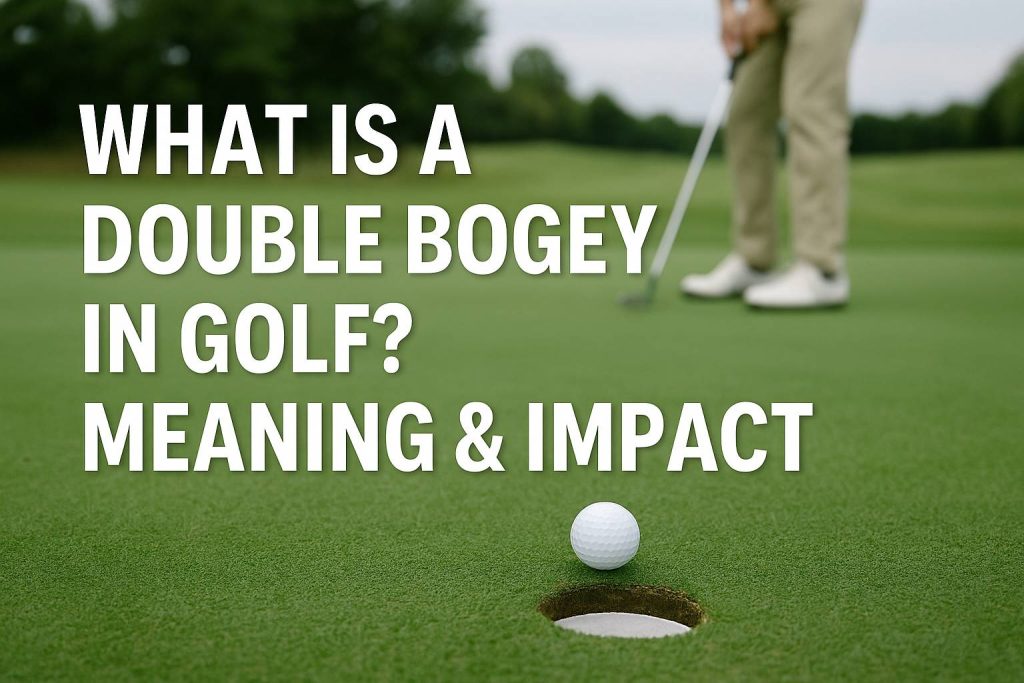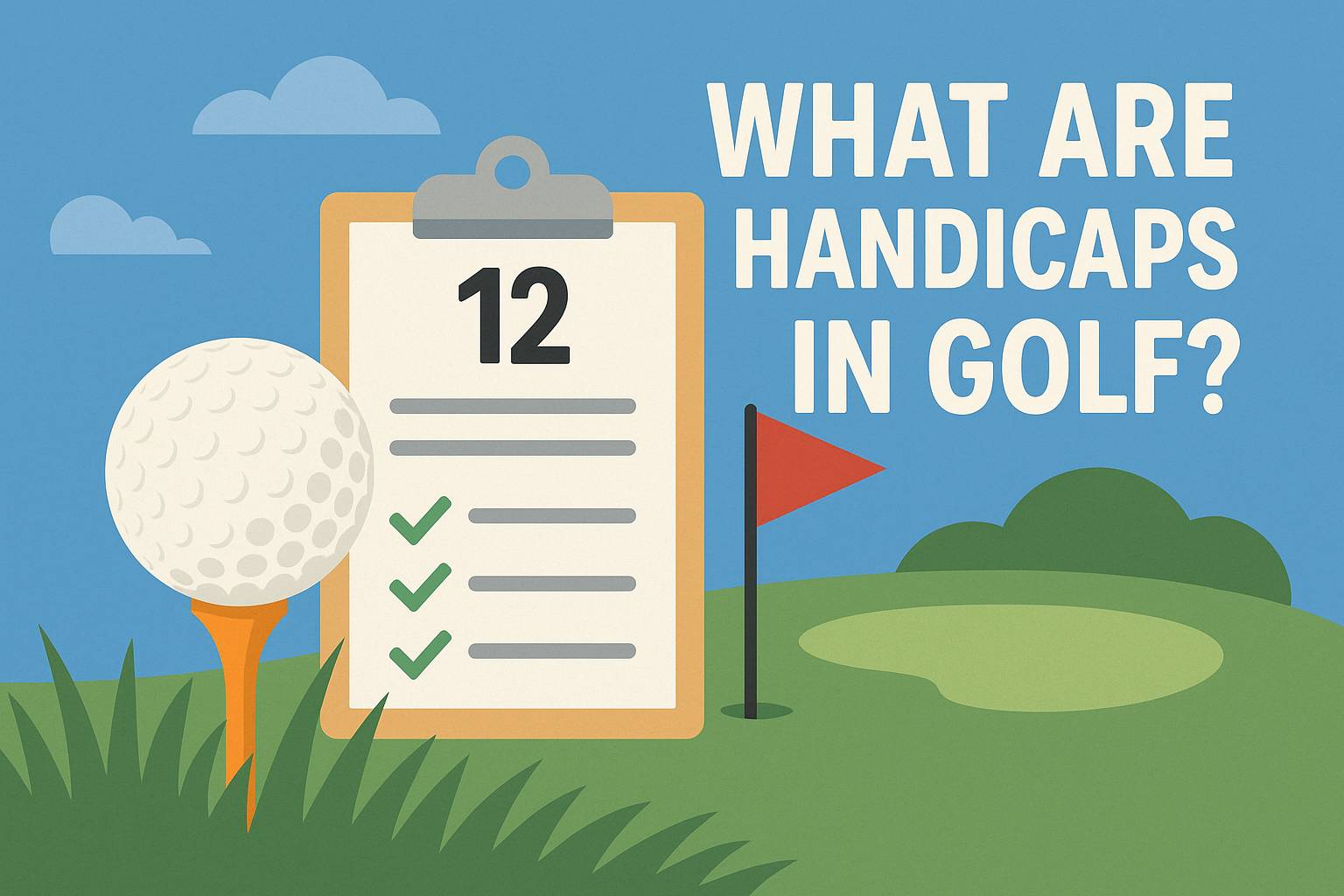In the game of golf, the score on each hole is more than just a count of how many times a player hits the ball—it reflects a combination of skill, strategy, and course management. One term frequently used by both amateur and professional golfers is double bogey. This term refers to completing a hole in two strokes over par.
For instance, on a par-3 hole, the expectation is to complete it in three strokes. If a player requires five shots to finish the hole, that’s a double bogey or +2 over par. The same applies to a par-4 completed in six strokes, or a par-5 finished in seven strokes—they’re all double bogeys.
Understanding this concept is important, as a double bogey often indicates a breakdown in strategic decisions or technical execution during the hole. While certainly undesirable—especially in professional tournaments—it remains a common and natural part of golf. Every golfer, at some point, must learn how to deal with it gracefully.
This article from GoGolf will explore in depth the definition of a double bogey, how it compares to other golf scores, common causes behind it, and the best approaches to managing or avoiding it during a round.
Definition of Double Bogey and Real-World Examples on the Course

A double bogey is simply defined as a +2 score relative to par on a given hole. This means the player took two more strokes than the hole’s designated par. In golf scoring terms, it ranks two levels above par and typically suggests both a technical and strategic lapse.
Practical Examples:
- Par 3 Hole:
Ideal: 3 strokes
5 strokes = Double Bogey (+2) - Par 4 Hole:
Ideal: 4 strokes
6 strokes = Double Bogey - Par 5 Hole:
Ideal: 5 strokes
7 strokes = Double Bogey
Golf Score Terminology Comparison Table:
| Score Term | Strokes Relative to Par | Example Score on Par 4 |
|---|---|---|
| Albatross | -3 | 1 stroke |
| Eagle | -2 | 2 strokes |
| Birdie | -1 | 3 strokes |
| Par | 0 | 4 strokes |
| Bogey | +1 | 5 strokes |
| Double Bogey | +2 | 6 strokes |
| Triple Bogey | +3 | 7 strokes |
A double bogey is often a sign that something went wrong—be it a missed tee shot, a poor approach, a bunker mishap, or a three-putt on the green. In competitive play, a double bogey can heavily impact your overall score and must be managed with care and proper strategy.
[ Related: Essential Golf Terms Every Golfer Should Know ]
Common Causes of Double Bogey: A Mix of Technique, Strategy, and Mindset
Double bogeys rarely happen by accident. In most cases, they result from a series of missteps, whether technical, strategic, or mental. By understanding these triggers in detail, golfers can formulate smarter approaches to avoid or minimize double bogeys in future holes.
1. Poor Tee Shots
One of the earliest mistakes that can lead to a double bogey is a bad tee shot—whether it’s misaligned, overpowered, or simply a mishit. If the ball lands in deep rough, a bunker, or a hazard like a pond or forest, the next shots will likely be recovery attempts. In some cases, the initial drive might even result in a penalty stroke.
2. Overly Aggressive Strategic Choices
Sometimes golfers opt for high-risk shots from tough positions, like attempting to reach the green from a deep bunker, cutting corners through trees, or carrying water hazards. While these shots can be thrilling when successful, the risks are substantial. Failure often leads to additional strokes—raising the chances of a double bogey.
3. Inefficient Putting
The green is where scores can change dramatically. Many players suffer three-putts or worse, especially if they misread the break or fail to control their speed. If the green should be conquered in two putts but takes three, and there was a minor mistake earlier in the hole, a double bogey becomes very likely.
4. Penalty Strokes
Few things are more frustrating than a penalty stroke, which can easily lead to a double bogey. Common causes include:
- Out of bounds shots
- Water hazards
- Grounding the club in a bunker
When combined with just one or two other errors, a penalty stroke can tip a hole into double bogey territory.
5. Mental Pressure and Fatigue
In a full 18-hole round, golfers encounter repeated mental challenges. Rushed decisions, especially when frustrated or tired, often result in poor club selection or execution. Losing focus for just one hole is enough to post a double bogey.
Understanding these causes is not only key to avoiding mistakes but also crucial for developing a double bogey prevention plan for future rounds.
Make golf booking effortless. Install GoGolf App now!
Is a Double Bogey Always Bad? A Realistic Golf Perspective
In many golf circles—especially among professionals—a double bogey is seen as a major setback. But when viewed from a broader lens, both recreational and competitive, a double bogey isn’t always catastrophic.
The Professional Golfer’s Perspective
For pro golfers, a double bogey is a serious warning sign. In elite tournaments like the PGA or LPGA Tour, every stroke counts. A single double bogey can derail a round or shift a player’s position on the leaderboard. As such, pros often lean on conservative course management to avoid a +2 result when possible.
Still, even the world’s best aren’t immune. The difference is they’re equipped to analyze mistakes quickly and bounce back on the next hole.
The Amateur or Beginner’s Perspective
For amateur or casual golfers, especially those learning the game, a double bogey is perfectly normal. On challenging courses with tight fairways, bunkers, and water, occasional double bogeys are expected. Many recreational players aim for a bogey-average round (around 90 on a par-72 course), and a few double bogeys fit within that framework.
Course Conditions and Difficulty
Beyond skill levels, external factors like wind, course design, and green speed significantly affect scoring. On holes with high stroke indexes, even strong players might find a double bogey is the best achievable result.
Double Bogey as a Learning Opportunity
From an educational standpoint, a double bogey can be one of the most valuable learning moments in golf. It forces a player to reflect on everything from club choice and shot shape to mental preparedness. With that reflection comes the opportunity for consistent improvement.
How to Avoid and Reduce Double Bogey Risk on the Course
For many golfers, scoring a double bogey can feel discouraging. However, with the right knowledge, disciplined strategy, and purposeful practice, it’s possible to significantly reduce the frequency of double bogeys.
Here are proven strategies to help players at any level avoid repeated mistakes that lead to +2 scores on the card.
1. Prioritize Accuracy Over Distance
One of the most common causes of double bogeys is focusing too much on distance, especially with the driver. A powerful shot that ends up in trouble is less useful than a shorter, well-placed one. Choose clubs that offer better control, even if they don’t go as far.
2. Use Conservative Strategy on Difficult Holes
Every golf course has tough holes. Instead of chasing risky hero shots, play it safe. On a par-5 with water hazards, lay up in three shots instead of trying to reach the green in two. Managing the course is key to managing your score.
3. Practice Your Short Game Consistently
Many double bogeys come from poor short game execution. Three-putts, bad chips, or missed pitches all inflate your score. Commit time to practicing chipping, pitching, and putting to increase your chances of saving par or limiting damage to just a bogey.
4. Master Recovery Techniques
When you find yourself in trouble—bunker, deep rough, trees—recovery skills matter. Learn how to play low punch shots, escape bunkers with confidence, and deal with uneven lies. Good recovery can turn a potential double bogey into a bogey or even save par.
5. Avoid Penalty Strokes
Penalty strokes are major double bogey culprits. To minimize them:
- Know the location of OB lines and hazards
- Use safer clubs when you’re unsure of accuracy
- Consider the drop zone wisely if a penalty is unavoidable
6. Maintain Emotional Control
Golf is as much mental as it is physical. One poor decision can trigger a cascade of errors. Avoid tilt—don’t chase redemption with risky shots. Stay calm, disciplined, and focused on playing smart, one shot at a time.
Conclusion: Managing Double Bogeys as Part of Your Golf Journey
In golf, double bogeys are almost inevitable—even for seasoned players. But how a golfer responds to a +2 score is more important than the score itself.
For beginners and recreational golfers, a double bogey is a natural part of the learning curve. It highlights areas—be it technique or decision-making—that need refinement. With the right approach, a double bogey can become the starting point of growth, not the end of a round.
For competitive players, the goal is to minimize double bogeys without becoming overly cautious. Golf is always a game of balance—between risk and reward, strategy and execution.
By understanding the causes, evaluating course layouts, setting realistic expectations, and sharpening your skills, you’ll gradually reduce double bogeys. From there, better scores will come naturally.
[ Follow our social media Account: GoGolf Instagram | GoGolf Facebook | GoGolf X ]











